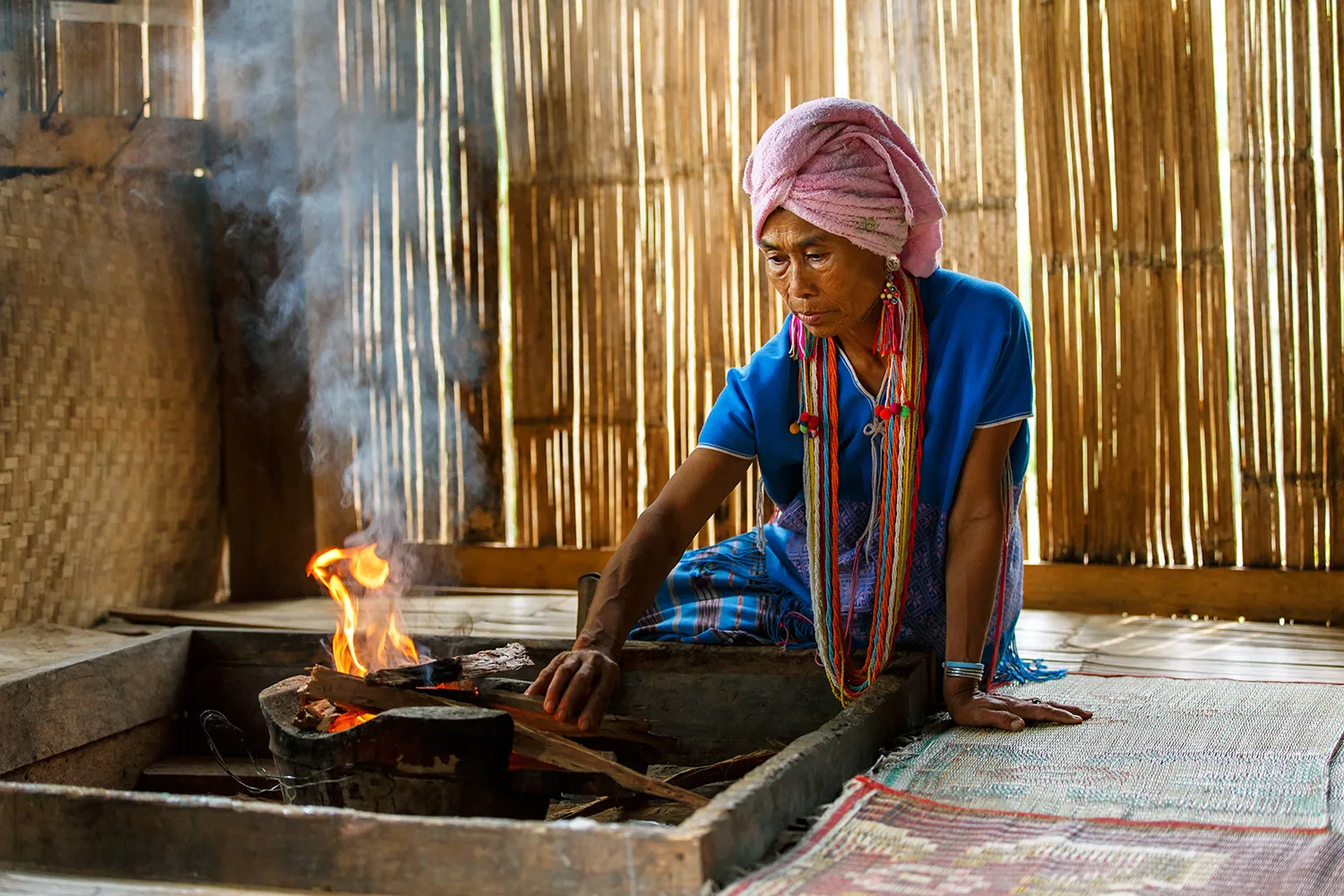The Karen Tribe, the most populous among the hill tribes of Mae Hong Son province, resides in scattered villages across every district. This extensive presence is attributed to the western border of Mae Hong Son, which connects with Myanmar’s Kaya State—the Karen Tribe’s original homeland. Having settled in Mae Hong Son for over 200 years, the Karen people have established villages throughout various districts in the province. Within Mae Hong Son, two prominent Karen groups exist: Pwo Karen and Sagaw Karen. The notable distinction between them lies in women’s attire, encompassing jewelry, dress colors, and weaving patterns. Pwo Karen women adorn more intricate jewelry compared to their Sagaw Karen counterparts. Single girls from both groups wear long white shirts that extend down to the shins. These distinct dress elements reflect the unique characteristics of each Karen tribe, serving as a clear marker of their individual identity.
Typically, Karen families inhabit high-platform wooden houses along valleys situated around 500 meters above sea level. A typical Karen family comprises only parents and unmarried children, with single households consisting of a father, mother, and children. The Karen people sustain themselves through rice cultivation, tending to various crops and vegetables, and engaging in animal husbandry, including pigs, chickens, oxen, buffaloes, and even elephants. These endeavors cater to consumption, ritual practices, trade, and wage labor. Spirit worship forms a cornerstone of Karen beliefs, although some individuals align with other religions influenced by their interactions with lowland communities.
Karen New Year Celebration.
The Karen New Year Celebration aligns with the period preceding rice cultivation, typically occurring around February each year. Determining the precise time for the celebration falls to a village witch-doctor. During the festivities, the witch-doctor initiates a ceremony by binding holy threads around the wrists of villagers. Each family’s head contributes distilled spirit to the witch-doctor, with the first glass reserved as an offering to the guardian spirit of the forest. This spirit is called upon to safeguard the village and foster crop growth. Subsequently, everyone partakes in collective drinking. Following the ceremony at home, the witch-doctor extends the ritual to all village households. The actual New Year’s Day involves the slaughter of numerous buffalo and pigs, commemorating the arrival of the new year amidst the Karen community.

